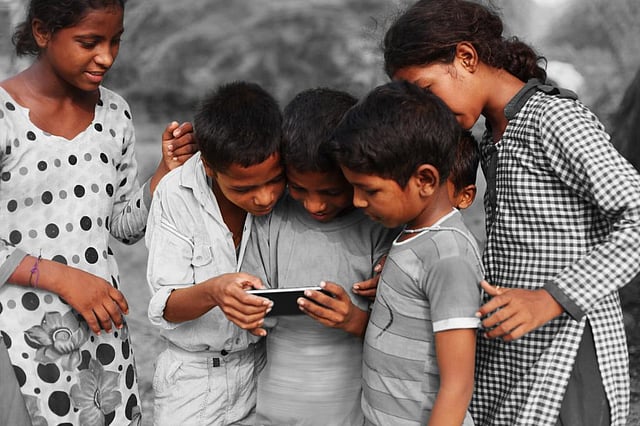Social Media and Indian Rural Girls: A Digital Revolution in the Making

Social Media and Indian Rural Girls: A Digital Revolution in the Making
Social media has transformed the way people communicate, learn, and express themselves. While urban India embraced this digital revolution early on, rural India, especially its young girls, is now catching up. For rural girls, social media is no longer just about entertainment—it is a tool for education, financial independence, self-expression, and activism.
From a girl in Uttar Pradesh starting an online business to a teenager in Rajasthan raising awareness about child marriage, social media is offering new avenues for empowerment. However, this transformation is not without challenges. Limited access, online harassment, and digital illiteracy continue to act as barriers. As India becomes increasingly digital, we must ensure that rural girls have safe and equal opportunities to thrive in the online world.
Education: Breaking Barriers through Social Media
For many rural girls, access to quality education has always been limited due to a lack of schools, transportation, or family restrictions. Social media is bridging this gap by bringing online learning platforms into their homes.
Take the example of Jyoti Kumari (name changed)
from Bihar, who was unable to attend school regularly due to household responsibilities. Through YouTube and WhatsApp learning groups, she continued her education, learning mathematics and science from free online classes. Today, she dreams of becoming an engineer.
Initiatives like Diksha (a government e-learning platform) and Digital Beti have helped thousands of rural girls access digital education. Social media allows them to connect with mentors, join virtual classrooms, and learn skills beyond what their local schools can offer.
Entrepreneurship: Turning Rural Talents into Businesses
Social media has enabled rural girls to start businesses from their homes, turning traditional skills into profitable ventures.
Take Pooja Devi (name changed) from Uttar Pradesh, who learned embroidery from her mother. Through Instagram and Facebook Marketplace, she started selling handmade sarees and dupattas, attracting buyers from cities like Delhi and Mumbai. Today, she earns more than ₹20,000 per month, something unimaginable for a girl in her village.
Similarly, Meesho, an online reselling platform, has helped many rural women sell clothing, jewelry, and handmade products, making them financially independent without stepping out of their homes.
Social media is not just providing income opportunities; it is also changing societal mindsets by proving that rural girls can contribute to household earnings.
Social Media as a Platform for Activism::
Rural girls are increasingly using social media to raise awareness about important issues such as gender discrimination, child marriage, and education rights.
For instance, Kavita(name changed), a 17-year-old from Rajasthan, started a YouTube channel to talk about child marriage, a practice still prevalent in her region. Her videos gained thousands of views, and some families even reconsidered marrying off their daughters early.
Another inspiring story is that of Kushboo (name changed) from Madhya Pradesh, who used Twitter to report the lack of toilets in her school. Her post went viral, and within months, authorities constructed proper sanitation facilities.
Social media is giving rural girls a voice—one that is being heard by thousands, sometimes even by policymakers.
Challenges: The Digital Divide and Online Safety::
Despite its benefits, social media presents challenges that prevent many rural girls from fully participating in the digital space:
1. Limited Access to Technology:
Many rural families prioritize boys over girls when it comes to smartphone access. Some villages even have unwritten rules banning girls from using social media, fearing it will lead to “bad influences.”
2. Online Harassment and Cyberbullying:
Cases of stalking, blackmail, and trolling discourage rural girls from using social media freely. Without proper digital education, many fall victim to scams or fake news.
3. Misinformation and Exploitation:
Rural girls often lack awareness about privacy settings and may unknowingly share personal information, making them vulnerable to cyber threats.
Without addressing these issues, the true potential of social media for rural girls will remain untapped.
The Way Forward: Ensuring Safe and Inclusive Digital Participation
To make social media a safe and effective tool for rural girls, the following steps are essential:
Expand Digital Literacy Programs: Schools and NGOs should provide training on online safety, cyber hygiene, and fact-checking to ensure girls use social media wisely.
Promote Equal Access to Technology: Government initiatives should focus on providing subsidized smartphones and internet facilities to rural girls. Families need awareness programs to reduce the gender gap in digital access.
Stronger Cyber Laws and Helplines: Authorities must ensure strict actions against cybercrimes targeting girls. Helplines and complaint mechanisms should be easily accessible to rural users.
Encourage Positive Role Models:Featuring successful rural women influencers, entrepreneurs, and activists on social media can inspire young girls to engage in meaningful ways.
Conclusion: A Digital Future for Rural Girls::
Social media has the power to transform rural India, and rural girls are at the forefront of this change. From education and entrepreneurship to activism and self-expression, they are breaking barriers, redefining gender roles, and proving that talent and ambition know no geographical limits.
However, to ensure that every rural girl can harness the power of social media safely and effectively, we must work towards digital inclusivity, safety, and education. When rural girls are empowered online, they don’t just change their own lives—they uplift their families, communities, and ultimately, the nation.
The future of rural India is digital. Let’s make sure its daughters are not left behind.
Would you like to add more real-life stories or focus on a particular aspect?



Responses